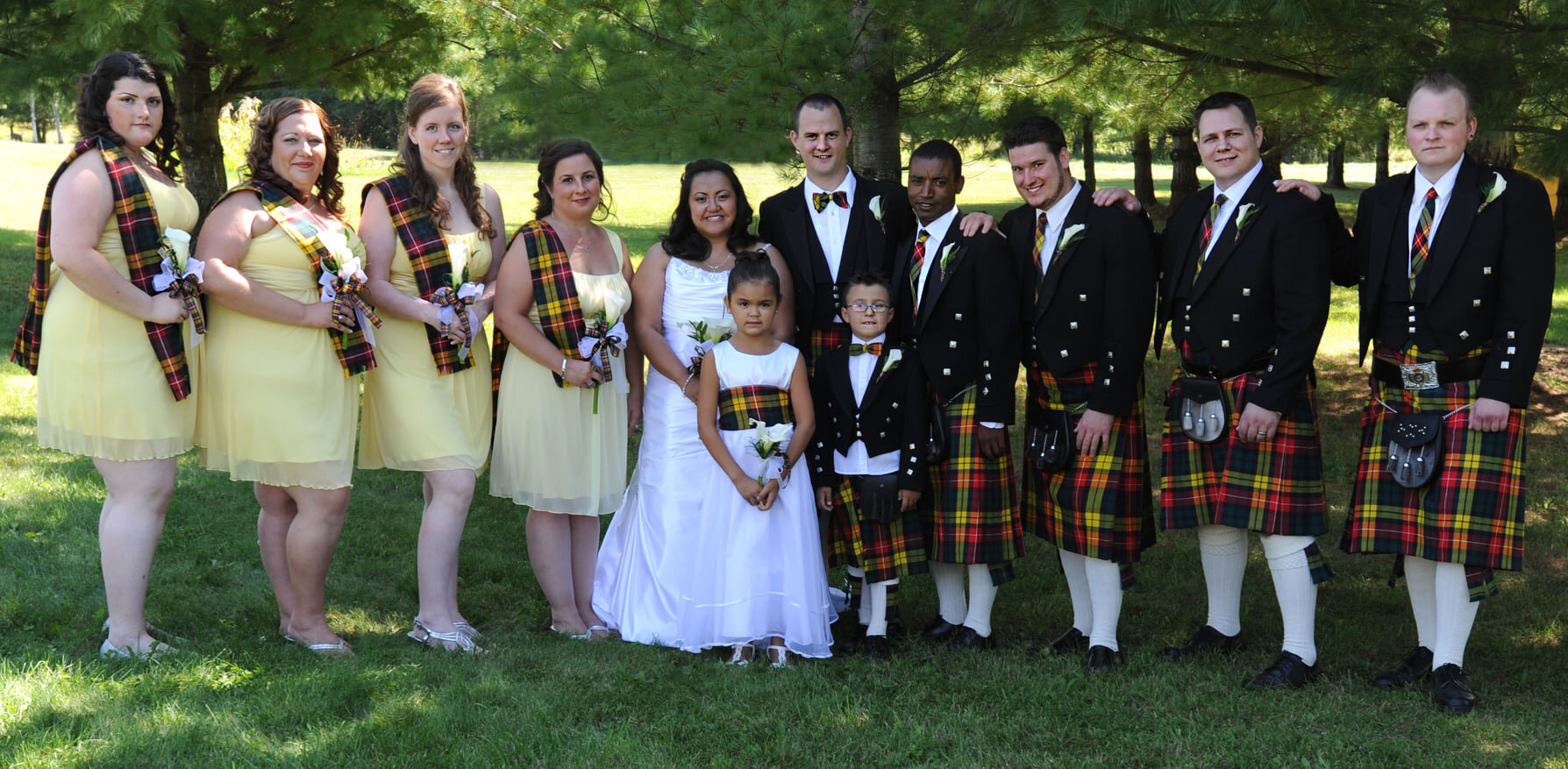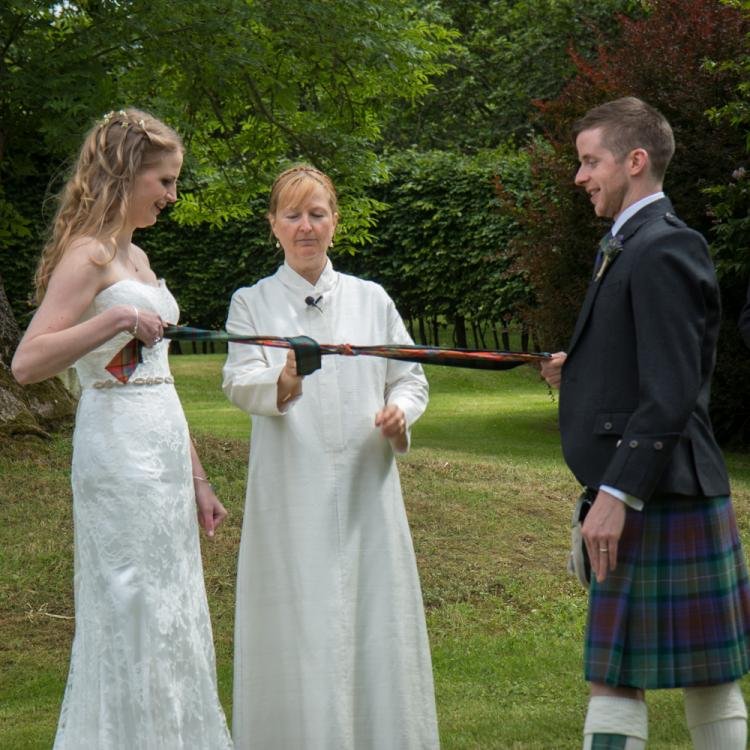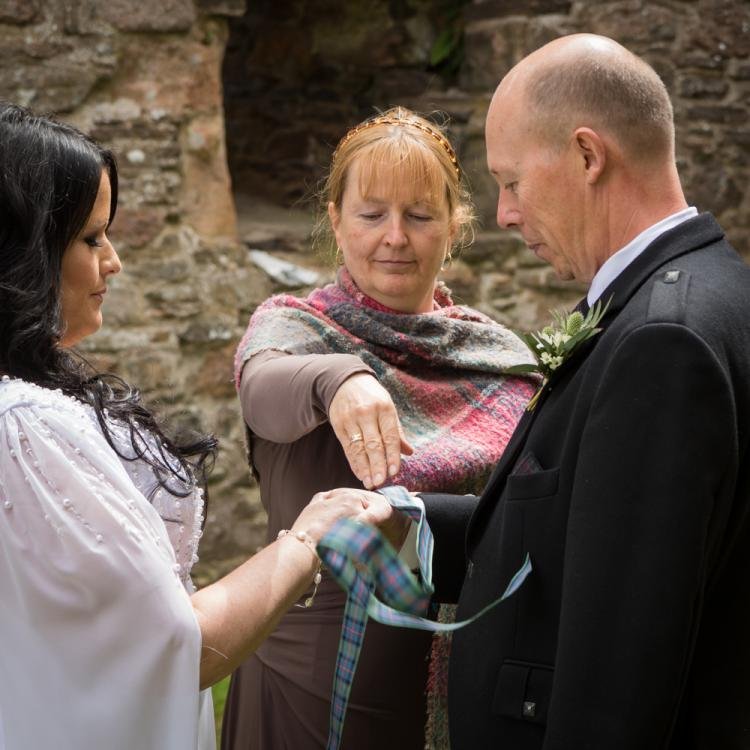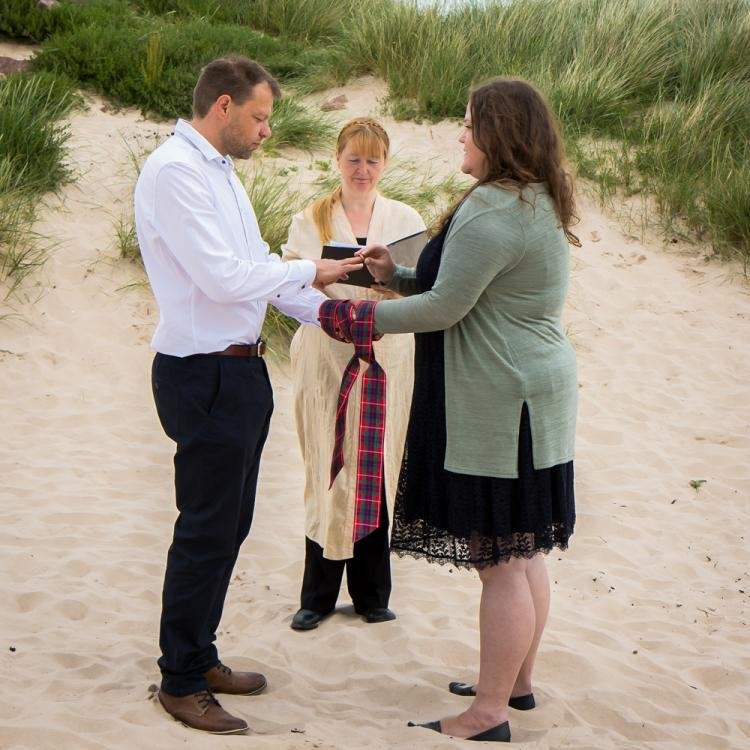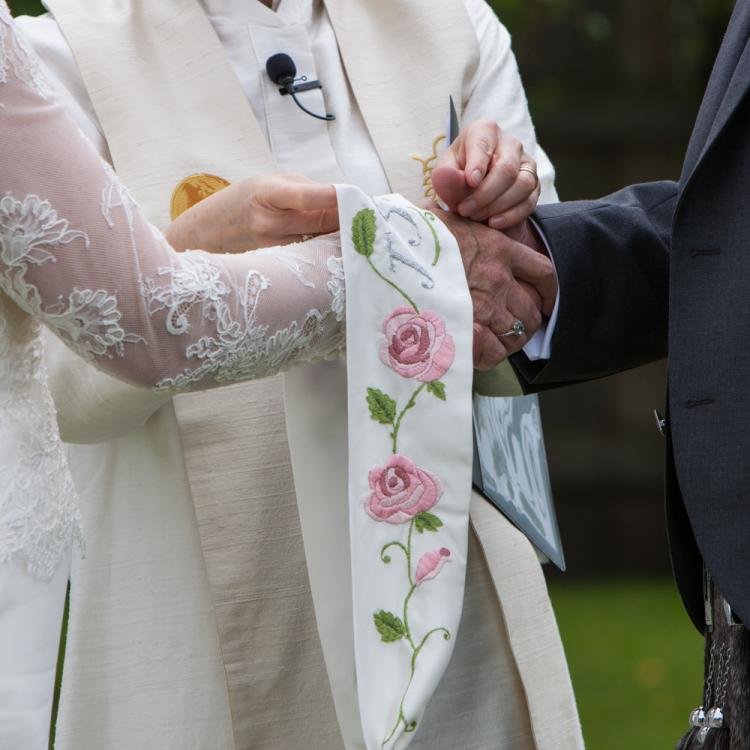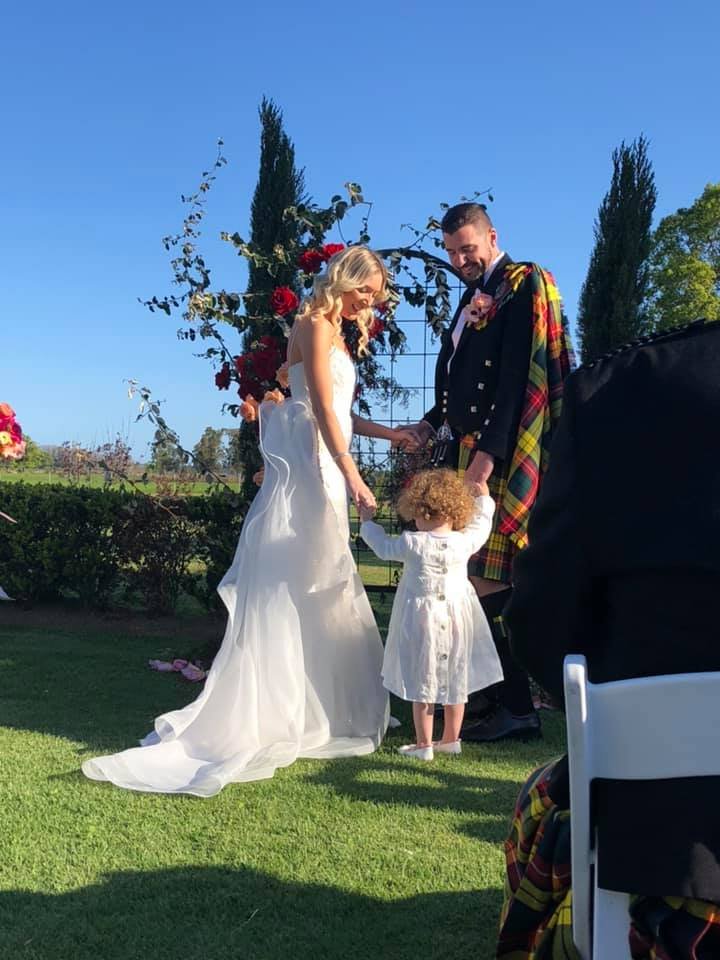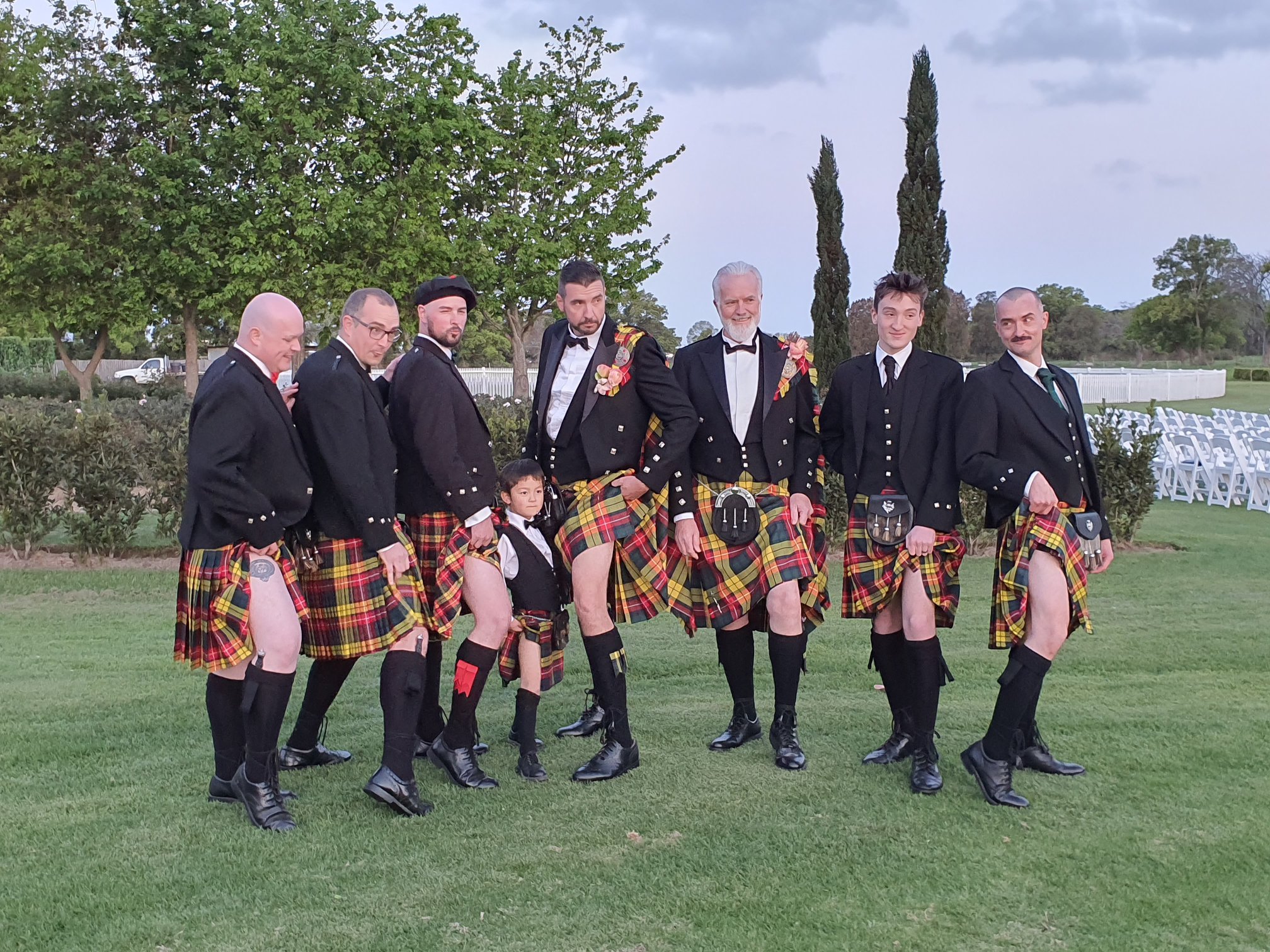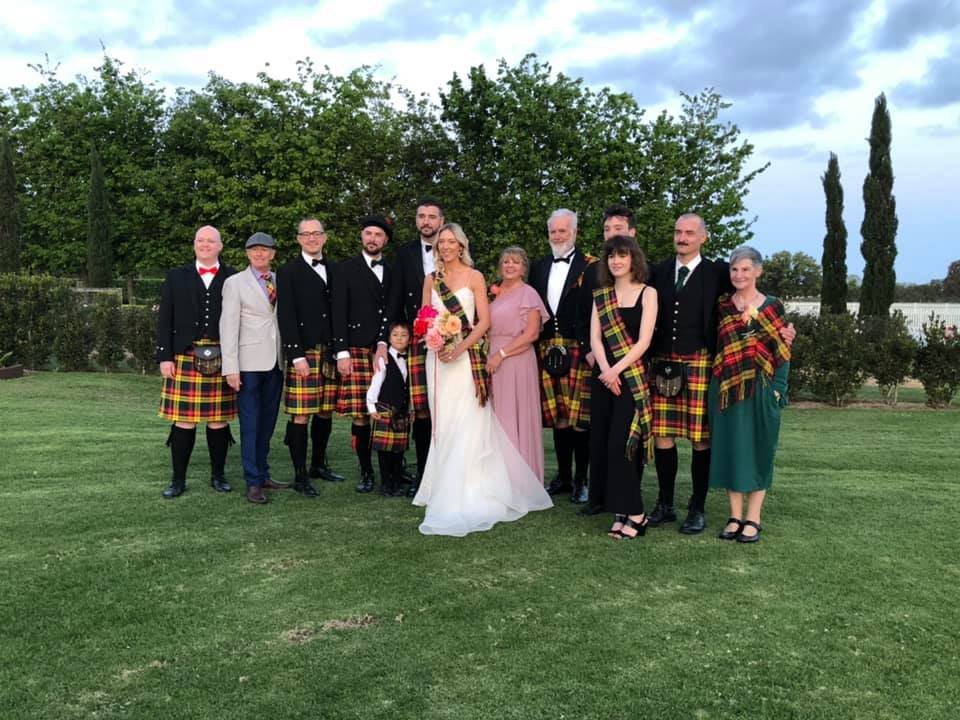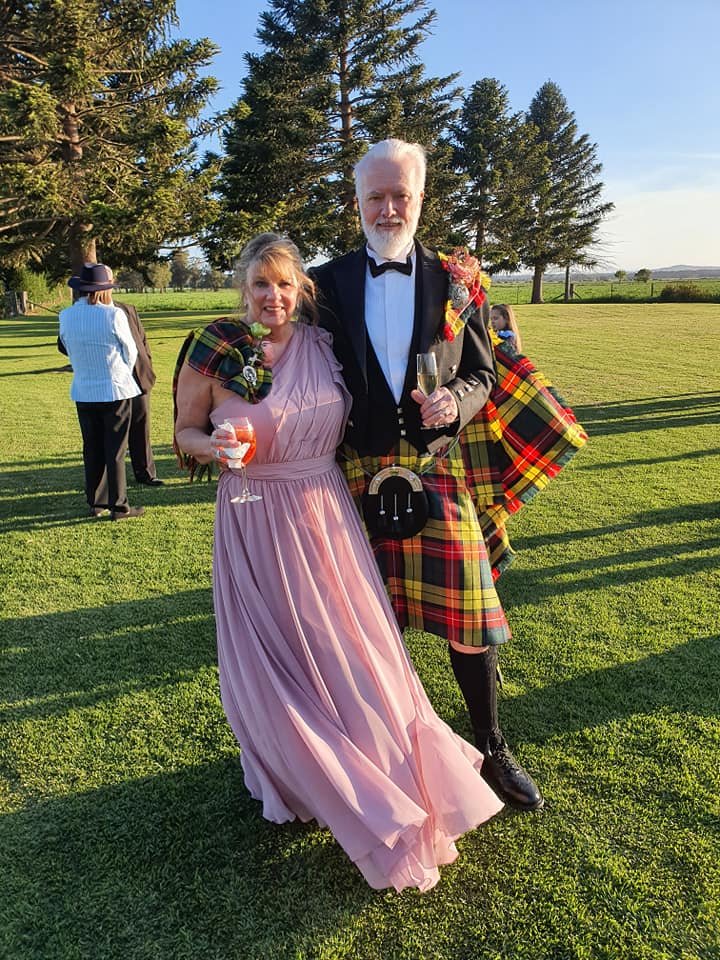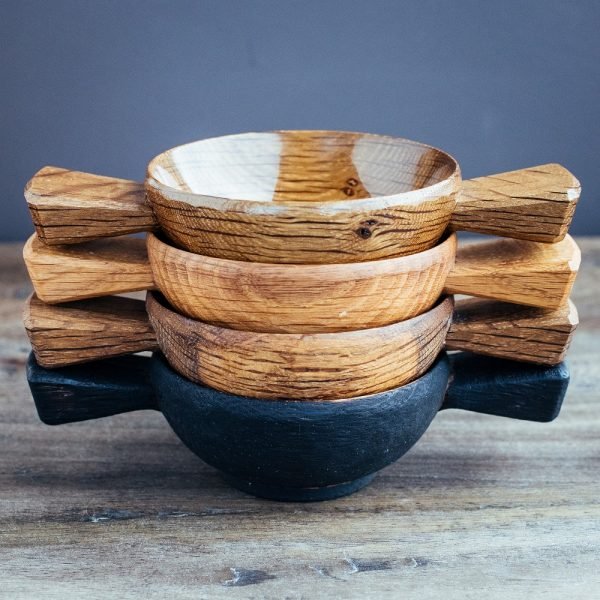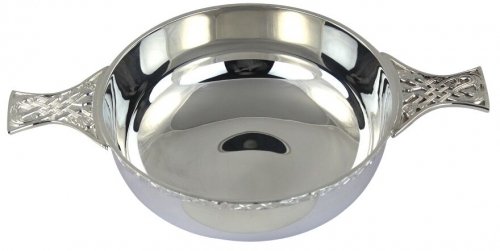Scottish Themed Wedding
Scottish Themed Traditions - with a Modern Twist
Considering a Scottish wedding? There’s a lot more to it than just wearing a kilt! Learn about the quirky Scottish good luck rituals and romantic customs you can incorporate into your own ceremony, from those which have become common in weddings around the world to obscure time-honoured traditions that are still followed in small corners of Scotland.
There are a lot of varying customs; AND WE’VE INCLUDED THEM ALL; so please select the elements that suit you and your betrothed…
The origins of the traditional Scottish wedding
The modern Scottish wedding is an intricate blend of ancient highland tradition mixed in with modern, streamlined rites which influences what we know as traditional America weddings. Back in the 13th century the medieval Celtic church would proclaim the 'banns of marriage' for three successive Sundays. This practice of announcing a forthcoming marriage lasted up to the 20th century, where it became standard to 'give notice of intent' to a registry office several weeks before the intended event.
Celtic wedding traditions
Celtic Scottish wedding practices had roots in pagan rituals. Handfasting (read below) originated from the bride and groom ripping their wedding plaids (clan tartans) and tying the two strips together as a symbol of the unity of the two families.
According to Gaelic tradition it is unlucky to marry in the month of May or during a waning moon. The remote Scottish Islands have Celtic wedding traditions and superstitions unique to their culture. On Barra, for example, it was traditional to sprinkle water on the marriage bed and bless it. In Mull, it was customary that the young couple sleep in a barn for their first night and in Lewis they lived for a week with the bride's parents before going to their own home.
CBSI President David Byrne: also a celebrant! Performing a tartan knot and pinning of the tartan ceremony of his nephew Keith's and bride Janet.
Medieval Scottish wedding traditions
It was normal practice in olden times for an entire village to get involved in the preparations for the 'big day'. People would line the streets to the church to cheer on the happy couple before they took their vows. In pre-reformation times, there is evidence that two Scottish wedding services would frequently take place. One in which the priest would address the party in Scots dialect and lead a ceremony outside the church. Whilst the more formal Latin mass and nuptial ceremony would take place inside.
The exchange of the rings has always been a main feature in Scottish wedding ceremonies from ancient times . A ring has no beginning and no end and as such symbolises the love within a marriage. The kissing of the bride follows on from this exchange of rings, and often leads to a cheer from the body of the kirk.
Following on from the formal church ceremony, a piper or group of pipers would frequently lead the entire group of guests down the streets, often to a relative's house, for a non-stop night of celebration, feasting and enjoyment. Local musicians led by pipers would get the dancing started and tradition has it that the first dance, normally a reel, would involve the newly wed couple. Following on from their efforts, the rest of the guests would then dance all the way into the wee hours. In this respect, little has changed over 800 years - maybe apart from the dress code and the type of beer on tap.
When the wedding celebrations were over, the married couple would then leave to spend the night in their new home. The ancient tradition of carrying the bride over the doorstep was linked to the superstition that evil spirits inhabit the thresholds of doors. Hence the bride is lifted over the thresholds - and into the wedding bed. In medieval times, a priest would often bless the house and bless the wedding bed at this time. Then for the first time, as man and wife, the newly weds would have some quality time on their own.
Other wedding rituals such as the Highland custom of 'creeling the bridegroom', involved the groom carrying a large creel or basket filled with stones from one end of a village to the other. He continued with this arduous task until such times as his bride to be would come out of her house and kiss him. Only if she did, would his friends allow him to escape from the ‘creeling’ otherwise he had to continue until he had completed the circuit of the town.
Hens night (yep, Scottish origin)
Often before a Scottish bride is married, her mother holds an open house for a traditional "show of presents." Invitations are sent to those who gave wedding gifts to the couple and the wedding gifts are unwrapped and set out for viewing. After the show of presents the bride-to-be is often dressed up and her friends escort her through her town, singing and banging pots and pans, heralding the bride's wedding day.
This tradition has evolved into the legendary 'hen night'.
Stag night (yep, Scottish origin)
The groom, meanwhile, is taken out for a stag night on one of the evenings preceding the wedding. The Stag Night is meant to be a celebration of the last night of freedom, and a way of reassuring friends that being married doesn't mean that they are shut out of your life. The groom, like the bride, is dressed up and taken around town by his friends and work mates. There is often a great deal of harmless practical joking, of which the poor groom is the main target. When the night winds down, the groom is sometimes stripped of his clothes and covered in soot, treacle and feathers and left overnight tied to a tree or post. In some rural areas an open lorry is hired and the groom is paraded through his local area with much noise and celebration.
Luck superstitions
Right foot forward when exiting the house is the correct procedure a bride should follow on her way to the wedding
For good luck, a bride is supposed to have something old, something new, something borrowed and something blue on her wedding day, which may include:
A sixpence in the bride's shoe has long been a tradition in Aberdeenshire and Angus
A sprig of white heather hidden in the bride's bouquet is a popular good luck token in the Scottish Border – the Heather should be dried and kept as a keepsake over the years
A horseshoe on her arm
A blue garter (symbolizing love), which plays a part later at the wedding reception
It may sound odd, but feet-washing is a custom that originates in Fife and Dundee & Angus. The bride sits on a stool while an older, ‘happily married’ woman washes and dries her feet. In Fife, however, only a few brave bridegrooms go through the traditional custom, which involves sitting in a tub of water while his legs are smeared with grease, ash and soot. Lovely!
Don't look in the mirror! It is bad luck for the bride to look in the mirror wearing her complete outfit before her wedding day - old beliefs say that part of yourself goes into the reflection and therefore, the bride would not be giving all of herself to her new husband.
Crying the Banns
This is the original wording for the act of announcing an impending church wedding in Scotland. The word banns comes from an ancient English word meaning proclamation. The banns are posted (i.e., notice given) at church (aka a Kirk) announcing an upcoming wedding. This can be done anywhere between three months and fifteen days before the wedding ceremony.
If there are any reasons why the marriage should not go ahead, this is the time for them to be vocalized.
The Speerin
The Speerin is quite a challenging tradition, where the groom must go through a series of tasks and trials to impress their would-be father-in-law before gaining his approval.
The Wedding Sark
The wedding sark is quite literally the exchanging of gifts between the bride and groom, and it is often the bridal dress and the groom’s clothing that get paid for by either side. The bride would normally buy the groom’s wedding sark or shirt, and the groom would pay for the bride’s dress.
Additionally
The Groom should give his bride wheat to provide for the home
The Bride gives the Groom some woven cloth to provide for the home
The Groom gives a dagger for the defense of the home
The Bride gives a Bible for the spiritual defense of the home
The Luckenbooth
The Scottish bride is often adorned with a luckenbooth, which is a brooch given as a token of love by the groom. They are normally made of silver and engraved with two love hearts.
The name derives from an old Scots word for a lockable stall. The Luckenbooths of Edinburgh, were where jewellery used to be sold – located on The Royal Mile near St Giles Cathedral and were the city’s first permanent shops dating back to the 15th century.
Attire
The bride's white gown and veil is a modern instigation. A Scottish bride will usually wear a traditional white or cream wedding gown. Bridesmaids may wear whatever the bride has chosen to match her dress and it may include a little tartan accessory. Bouquets may include tartan ribbons or bows.
The wearing of a veil originated with arranged marriages. In these, the groom's family informed him that he was to marry, but they very rarely let him see the bride. After all, if the groom didn't like the bride's looks, he might not agree to the marriage. With this in mind, the father of the bride gave the bride away to the groom who then lifted the veil to see his wife of all eternity for the first time.
A gent's highland wedding outfit consists of Bonnie Prince Charlie jacket and waistcoat, kilt, tartan flashes to match kilt, white hose, gillie brogues, kilt pin, sgian dubh, black belt with buckle, formal sporran with chain strap, wing collar shirt, black or coloured bow tie, and a piece of lucky heather on the lapel. The Groom or Fathers of the Bride and Groom also have the option of wearing a fly plaid, which is anchored under the paulette on the shoulder of the jacket and secured by a large plaid brooch (Cairngorm); it is inappropriate for any other guest to wear a fly plaid. For a morning or day wedding, black or tweed Argyle jackets and day sporrans are appropriate.
Please consult our Attire pages to learn more.
Elements for the ceremony
The Wedding Walk
The formal march taken by the wedding party to the church. Preceded by a piper or fiddler, the bridegroom leads the maid of honour while the bride walks behind with the best man. After the ceremony, the newlyweds leave the church followed by the best man escorted by the maid of honour. To secure good luck it was traditionally thought that the wedding procession should cross running water twice.
It was regarded as unlucky for the procession to meet a pig or a funeral procession on their route. If they did, the march would have to restart from the beginning.
All the best bridal carriages used to be pulled by grey horses and it is still considered good luck to see a grey horse on the way to the church.
Bride to the left of the Groom
In Scotland, eons ago, a bride was seen as a ‘warrior’s prize’ and as such the man would hold her with his left hand. This left his right hand free to use his dirk (short sword) to fight off his soon-to-be in-laws who may object to their union. Thankfully, this wedding tradition is out of favour with modern couples, though the custom of the bride standing to the groom’s left still exists.
Music
Traditional Gaelic hymns are often played at Scottish weddings and the bride is frequently piped down the aisle. The 'Highland Wedding' tune is still a feature today at many ceremonies in Scotland.
Paying the Piper
Many Scottish weddings have a piper; not only is it a beautiful Scottish tradition, it is also considered lucky. The skirl of the bagpipes was thought by many to scare away any evil spirits that may be hovering near by, and in this way the piper’s music would protect the bride and groom as they entered into their marriage and bless it with good luck. For this to be effective however, a kind of contract had to be observed; the piper had always to be paid for his services with a dram of whisky. Once he has seen the bride and groom safely to the top table he is toasted by the groom and ‘paid’ in a dram of whisky, legitimizing the contract and thus ensuring that the protection offered by the piper’s music was effective. The dram of whisky is offered in a Quaich, which in turn has its own unique purpose and traditions…
Handfasting (a modern take on an old Scottish tradition).
Handfasting was a custom used during the Middle Ages to mark the beginning of a period of engagement between a couple (in England) but it was also, in most cases, a legally binding commitment and the couple could then be considered legally wed. Meantime, in Scotland, this Celtic tradition created a temporary (or probationary) marriage which was usually formalized with a religious ceremony after one year. In Scotland, handfasting involves a witness to the wedding tying together the couples’ right hands, usually with ribbon/s, fabric, sash, woven cords etc. This is literally 'tying the knot'!
With a tartan scarf or sash of sufficient length, of the Brides and/or Grooms clan; hands get ceremonially tied together. This is where the saying “Tying the Knot” comes from!
After the Bride and Groom exchange rings, the betrothed continue to face each other and hold each other’s hands as the officiate wraps their hand with the tartan scarf / sash. The officiate then names the clan / clans and says something like:
With the exchange of rings and this handfasting you are now bound one to the other with a tie not easy to break.
Take this time of binding as your vows are made to pledge to learn what you need to know so that you may grow in wisdom and love for each other.
And pledge your marriage will be as strong as the clan(s) that surround you and support you.
That your love will last as long as the story of your family which has been passed down from generation to generation in this life and beyond.
Moira Buchanan and Jeremy Hudson during their handfasting ceremony on 18th July 2015 with the ruins of Castle Knock in the background — Isle of Skye, Scotland.
According to www.gettingmarriedinscotland.org/celtic-handfasting there are many interpretations and representations of Handfasting for inspiration; having evolved from Pictish, Pagan, Celtic and Druid sources
-
NAME and NAME have chosen a traditional handfasting ceremony to symbolise their entering into the bonds of marriage. In the Scottish traditions, weddings were celebrated by a simple ceremony in which two partners would join hands and their wrists would be tied with a cord or ribbon, symbolising the binding together of their individual lives. It is from this practice that we get the expression “tying the knot”.
(Couple joins hands.)
NAME and NAME, this cord is a symbol of the connection between your two lives. As your hands are bound together by this cord, so too, will your lives be bound together in marriage.
(The Couple’s wrists are wrapped and tied loosely with ribbon or cord. This can be done by the officiant or by the couple’s guests.)
These are the hands that will love you.
These are the hands that will hold and comfort you through the years.
These are the hands that will give you support and encouragement.
These are the hands you will each work with, create with, and use to build a life together.
The knots of this binding are not formed by these cords but instead by your vows,
the promises you make in your hearts and uphold each day through your actions.
Remember, you hold in your own hands the making or breaking of this union.Just as your hands are now bound together, so too, are your lives.
Because you cannot always be physically joined together,
you will each give to the other a wedding ring to symbolise that connection.
It will be worn on your hand as a constant reminder
of the bond shared between you as a married couple. -
NAME & NAME, please join your hands.
Today you are holding the hands of your best friend,
young and strong and full of love for you,
as you promise to love each other forever on your wedding day.These are the hands that will work alongside yours as together you build your future.
These are the hands that will passionately love and cherish you through the years
and will comfort you like no other.These are the hands that will hold you when fear or grief fills your mind.
These are the hands that will wipe tears from your eyes, tears of sorrow and tears of joy.
These are the hands that will tenderly hold your children.
These are the hands that will help you hold your family together as one.
These are the hands that will give you strength when you need it.
And these are the hands that – even when wrinkled and aged – will still be reaching for yours
and expressing the same tenderness they do today with just a touch. -
Diana Gabaldon has inspired a generation with her Outlander series featuring the lives and times of Claire and Jamie Fraser. After their traditional church wedding vows, their hands were tied and they made a blood oath whilst repeating the following words.
“Ye are Blood of my Blood, and Bone of my Bone
I give ye my Body, that we Two might be One
I give ye my Spirit, til our Life shall be Done" -
The handfasting between William Wallace and Murron in the film Braveheart was very simple and moving. Standing side by side, she placed the palm of her left hand on the back of his right hand, and the priest wound a piece of tartan around their hands, then she laid an embroidered handkerchief over their hands – there was no knot.
“I will love you my whole life – you and no other”
“And I you – you and no other – forever”
-
Even though The Red Wedding in Game of Thrones didn’t end well, still the words Robb and Talisa said to one another have proved very popular. Talisa laid her left hand on Robb’s right hand and the priest bound their hands together.
“I hereby seal these two souls, binding them as one, for eternity”
“Father, Smith, Warrior, Mother, Maiden, Crone, Stranger
I am his/hers and he/she is mine
from this day until the end of my days” -
We can imagine Connor and Heather MacLeod would have had a handfasting, even though we don’t see their wedding take place in the film Highlander, and we can further imagine they might have said something like this Celtic wedding vow.
“You cannot possess me for I belong to myself.
You cannot command me, for I am a free person.
But I pledge to you that yours will be the name I cry aloud
in the night and the eyes into which I smile in the morning.” -
There are several theories on the origin of HanFasting, one is that there used to be a fair at Langholm a few miles from Gretna Green.
History (or legend?) has it that every August the fair brought the opportunity for couples to enter a year’s trial marriage by clasping hands and declaring their intent to be faithful to one another for a year – this was known as handfasting.
At the following year’s fair the couple made the decision to remain together or part. If they remained together they were then declared married, and if they chose to part, that was the end of the matter. Very simple, very easy, but open to abuse when inheritance or property ownership was at stake!
-
Now you are bound one to the other
With a tie not easy to break.Take the time of binding
Before the final vows are made
To learn what you need to know -
To grow in wisdom and love.That your marriage will be strong
That your love will last
In this life and beyond.
Wedding Rings
Wedding rings date back to Roman times, where they believed that the fourth finger of the left hand was connected to the ‘vena amoris’ or ‘vein of love"‘. Ancient Scottish custom stated that the bride should have two rings — one for everyday wear and another dress ring, which was traditionally more expensive.
The Oathing Stone
An oath given by water or over a stone was said to make the marriage binding. Over time, the tradition has evolved into the bride and groom Handfasting on a stone as they recite their vows.
In some parts of Scotland, the couple will carve their names into the bark of a tree or on a stone. Some such bridal stones still exist across Scotland today.
Nowadays, guests decorate small stones by etching the bride and groom’s names or initials and the wedding date.
The Groom’s Siller
Scottish grooms would be expected to pledge to ‘provide and protect’ to which end he would bring his ‘siller’ or silver (usually coins) to the ceremony.
Before the cerimony the groom would give the officiant 13 silver coins, called ‘arrhae’. During the ceremony, the priest or minister would drop the coins into the groom’s hands. The groom then dropped them into the bride’s hands. She in turn dropped them back into the groom’s hands. The groom then loudly dropped the coins into a plate, held by an assistant of the officiant.
The sound of the dropping coins symbolised the groom’s promise to provide financially for his wife. The bride returning the coins symbolised her promise to share their wealth, and husband their money wisely.
Celebrants’ passages
If you are a professional Minister new to Scottish ceremonies, looking for traditional passages or seeking inspiration for your own prose, here are some ideas…
We cant take credit for these (source) but if you have anying touching, please let us know…
-
May the road rise to meet you,
May the wind be always at your back.
May the sun shine warm upon your face,
The rains fall soft upon your fields.
And until we meet again,
May God hold you in the palm of his hand.May God be with you and bless you;
May you see your children's children.
May you be poor in misfortune,
Rich in blessings,
May you know nothing but happiness
From this day forward.May the road rise to meet you
May the wind be always at your back
May the warm rays of sun fall upon your home
And may the hand of a friend always be near.May green be the grass you walk on,
May blue be the skies above you,
May pure be the joys that surround you,
May true be the hearts that love you. -
Ye are Blood of my Blood, and Bone of my Bone.
I give ye my Body, that we Two might be One.
I give ye my Spirit, ’til our Life shall be Done.
-
You are the star of each night,
You are the brightness of every morning,
You are the story of each guest,
You are the report of every land.No evil shall befall you, on hill nor bank,
In field or valley, on mountain or in glen.
Neither above, nor below, neither in sea,
Nor on shore, in skies above,
Nor in the depths.You are the kernel of my heart,
You are the face of my sun,
You are the harp of my music,
You are the crown of my company. -
I pledge my love to you, and everything that I own.
I promise you the first bite of my meat and the first sip from by cup.I pledge that your name will aways be the name I cry aloud in the dead of night.
I promise to honor you above all others.Our love is never-ending, and we will remain, forevermore, equals in our marriage.
This is my wedding vow to you. -
Ye are Blood of my Blood, and Bone of my Bone.
I give ye my Body, that we Two might be One.
I give ye my Spirit, 'til our Life shall be Done.You cannot possess me for I belong to myself.
But while we both wish it, I give you that which is mine to give.
You cannon command me, for I am a free person.
But I shall serve you in those ways you require
and the honeycomb will taste sweeter coming from my hand. -
You cannot possess me for I belong to myself.
But while we both wish it, I give you that which is mine to give.You cannot command me, for I am a free person.
But I shall serve you in those ways you require,And the honeycomb will taste sweeter coming from my hand.
I pledge to you that yours will be the name I cry aloud in the night,
And the eyes into which I smile in the morning.I pledge to you the first bite of my meat and the first drink from my cup.
I pledge to you my living and my dying, each equally in your care.I shall be a shield for your back and you for mine.
I shall not slander you, nor you me.
I shall honor you above all others, and when we quarrel we shall do so in
Private and tell no strangers our grievances.This is my wedding vow to you
This is the marriage of equals.Morgan Llywelyn
-
O my luve is like a red, red rose,
that's newly sprung in June:
O my luve is like the melodie,
That's sweetly played in tune.As fair art thou, my bonie lass,
So deep in luve am I;
And I will luve thee still, my dear,
Till a' the seas gang dry.Till a' the seas gang dry, my dear,
And the rocks melt wi' the sun;
And I will luve thee still my dear,
While the sands o' life shall run.And fare thee weel, my only luve!
And fare thee weel a while!
And I will come again, my luve, Tho' it were ten thousand mileRobert burns
-
Ithers seek they ken na what,
Features, carriage, and a' that;
Gie me love in her I court,
Love to love makes a' the sport.Let love sparkle in her e'e;
Let her lo'e nae man but me;
That's the tocher-gude I prize,
There the luver's treasure lies.Robert Burns
-
Mìle fàilte dhuit le d'bhréid,
Fad do ré gun robh thu slàn.
Móran làithean dhuit is sìth,
Le d'mhaitheas is le d'nì bhi fàs.
A thousand welcomes to you with your marriage.
May you be healthy all your days.
May you be blessed with long life and peace,
may you grow old with goodness, and with riches.
-
Blessed be this union with the gifts of the East.
Communication of the heart, mind, and body
Fresh beginnings with the rising of each Sun.
The knowledge of the growth found in the sharing of silences.Blessed be this union with the gifts of the South.
Warmth of hearth and home.
The heat of the heart's passion.
The light created by both to illuminate the darkest of times.Blessed be this union with the gifts of the West.
The deep commitments of the lake The swift excitement of the river.
The refreshing cleansing of the rain.
The all encompassing passion of the sea.Blessed be this union with the gifts of the North.
Firm foundation on which to build.
Fertility of the fields to enrich your lives.
A stable home to which you may always return.
Ian and Ally Wedding 2019, Australia
After the ceremony
Pinning the Tartan
More a Scottish/American tradition – this is a nice way to welcome someone of a different clan or non-Scot into your family. Once the bride and groom are officially declared husband and wife, pinning the tartan takes place. Importantly, this symbolises the acceptance of each spouse into the other person’s family.
Here, a rosette or crest of the accepting family is fastened to the other spouse’s tartan by a member of the accepting family. For example, a member of the groom’s family would fasten their crest to the bride’s tartan or vice versa, and this means the person symbolically becomes a part of their family.
And/or a small piece of your family’s tartan ribbon or fabric which is then pinned either to the bride, groom (or both, depending on family history) and/or the guests.
The Scottish Quaich
The Scottish Quaich or ‘Loving Cup’ is a two-handled silver bowl presented to the Bride; which is topped up with whisky (by the bride), and then passed around for the wedding party to sip once the legal proceedings have been concluded.
Originally, Quaichs were made of wood but by the 1600s, silver quaichs were more commonly used.
The Quaich must be held with both hands. This is extremely important as historically a marriage would often join two Scottish clans together, and these clans were not always on speaking terms. Because the Quaich had to be drunk with both hands it showed trust in the opposite clan and was a mark of honour and respect (if both hands were on the Quaich, neither were holding a weapon!)
Traditionally the Quaich would have been handed round all of the clan leaders present after the bride and groom had drunk their fill. Today it is usually passed around anyone and everyone in the wedding who wants a dram!
Wedding Confetti
While the word confetti comes from Italian and means “candied” (for an Italian wedding, it refers to sugar-coated almonds – the almond symbolises the bitter-sweetness of marriage and the beginning of a new life) the act originated from the ancient pagan rite of showering the happy couple with grain to wish upon them a 'fruitful' union. Pagans believed that the fertility of the seeds would be transferred to the couple on whom they fell. The throwing of rice has the same symbolic meaning.
The throwing of rice at the bride and groom was replaced because it was prone to cause injury. These days, Scottish wedding confetti is somewhat unique, with Tartan plaid and shamrock shapes a common sight; or flowers and petals.
The Wedding Scramble
The wedding scramble is traditional in most parts of Scotland. As the bride steps into the car, her father or the Groom throws a handful of coins for the children (who have gathered outside the church to watch) to collect.
Believed to bring about financial good fortune, it also takes place in weddings in Ayrshire where it is known as a 'warsel'.
This “scramble” is the reason children make a bee-line for local weddings. As the couple leave the ceremony the groom dips his hands into his pockets (or sporran), and throws all his loose change out on the ground for the children to scramble for.
The Grand March
If the ceremony is held next to or in the same facility as the reception – it is traditional for a piper to lead the Bride and Groom followed by the best man and maid of honor, the wedding party, the in-laws and then family and friends as they march directly to the dinner. Of course this can be varied if there is a need for photographs or if the meal is in a different location.
Once again, the bride must step out with her right foot first to bring good luck.
Paying-The-Piper
Paying-the-Piper as a phrase refer to pipers leading troops to war, the idiom, ‘he who pays the piper calls the tune’ and even perhaps to the myth of the Pied Piper of Hamlin. However, this has a very specific meaning in traditional Scottish weddings: The skirl of the bagpipes was thought by many to scare away any evil spirits that may be hovering nearby, and in this way the piper’s music would protect the bride and groom as they entered into their marriage and be blessed with good luck. For this to be effective however, a kind of contact had to be observed; the piper had to be paid for his services with a dram of whisky. Once he has seen the bride and groom safely to the top table he is toasted by the groom and ‘paid’ in a dram of whisky, legitimizing the contract and thus ensuring that the protection offered by the piper’s music was effective.
Broom
At the end of the ceremony, a straw broom is placed in the path of the couple's exit. They have to get over it somehow. They can walk over it. He may carry her over it, or jump over it together. It is up to them. This symbolizes the daily details of marriage.
Dances at the Reception
The Traditional Grand March is often the first dance to take place at a wedding reception. It begins with the bride and groom marching to the sound of bagpipes or a live band. The maid of honour (or chief bridesmaid) and the best man join in, followed by both sets of in-laws, and finally the guests!
The Lang Reel is a traditional dance which happens in the fishing communities in the north east of Scotland. The dance sees villagers and the wedding party begin dancing from the harbour and continue through the village, with each couple leaving the reel when they pass their home. This continues until the only couple left are the bride and groom who have the last dance
Dirk
A Dirk or Dagger, provided by the piper or a member of the family, used by the bride to cut the cake. The bride's hand is guided by the groom.
The Scottish Wedding Cake
Scottish wedding cakes tend to follow tradition. This means that truly Scottish wedding cakes feature two tiers and are most commonly a brandy-soaked fruit cake. The cake, according to tradition, should be baked at the time of the couple’s engagement. The flavours would mix into each other and become especially tasty in time for the wedding.
But only the bottom layer of the cake should be eaten at the wedding. The top tier should be saved and eaten as a celebration of the couple’s first child.
Carrying the bride over the threshold
The Scots believed that it was unlucky if the bride tripped on entering the house for the first time. So to avoid contact with 'evil spirits' they arranged for several members of the bridal party to carry her over the threshold. Nowadays the groom is expected to do the job himself.
Leap year proposals
The right of every woman to propose on 29th February each leap year, goes back many hundreds of years to when the leap year day had no recognition in English law (the day was 'leapt over' and ignored, hence the term 'leap year'). It was considered, therefore, that as the day had no legal status, it was reasonable to assume that traditions also had no status. Consequently, women who were concerned about being 'left on the shelf' took advantage of this anomaly and proposed to the man they wished to marry.
It was also thought that since the leap year day corrected the discrepancy between the calendar year of 365 days and the time taken for the Earth to complete one orbit of the sun (365 days and 6 hours), it was an opportunity for women to correct a tradition that was one-sided and unjust.
For those wishing to take advantage of this ancient tradition, you will have to wait until February 29th 2024!

